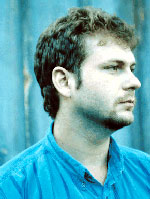 I just read an interesting article about technology being developed by a Los Alamos Ph.D. staffer named David Reagor. Reagor has been working on the device for 10 years, using a very low frequency (VLF) transciever, digital signal processing (DSP) and audio compression. The current prototype is called 'Canary II' and can work at depths of up to 500 feet. It's being commercially developed by Vital Alert Communication of Huntsville, ON.
I just read an interesting article about technology being developed by a Los Alamos Ph.D. staffer named David Reagor. Reagor has been working on the device for 10 years, using a very low frequency (VLF) transciever, digital signal processing (DSP) and audio compression. The current prototype is called 'Canary II' and can work at depths of up to 500 feet. It's being commercially developed by Vital Alert Communication of Huntsville, ON.
Quecreek initially struck a nerve with me, the mapping issue was fore on my mind. As I live in the heart of historic Anthracite mining territory, and having a land surveying background, I'm familiar with traditional methods of mine mapping - the major issue being transferring surface control reliably, after which mine engineers and surveyors try to count on reliable angular and distance measurements. Such technologies as theodolites and total stations equipped with gyrocompasses have been developed, but obviously GPS is out of the question, given the communication issue when transmitting through solid rock. I have worked with historic mine maps on a number of projects, and know some of the issues with these maps firsthand.
At any rate, there were a host of other issues leading to Quecreek - it's conventional wisdom around these parts that at a certain point in operations, the surveyors were pulled out of the mines and mapping ceased. However, the mining did not. In what was referred to as "robbing", the mines were stripped, even beyond constraints considered safe, where even the pillars supporting the roof were stripped of coal. Additionally, there were a number of wildcat mining operations. In Northeastern PA, mining generally ceased after the 1959 Knox Mine Disaster, where miners inadvertently broke through under the bed of the Susquehanna River, killing 12 men and flooding mine works.
Blame on unreliable mapping aside...
We had Sago, a recent Chinese mine disaster where the death toll is still climbing, and currently miners trapped in Australia. Such a device as Reagor has developed would be a tremendous boon. There is no price tag to be attached to the life of a miner.
Subscribe to:
Post Comments
(
Atom
)




0 Response for the " VLF Voice and Text Could Save Trapped Miners "
Post a Comment